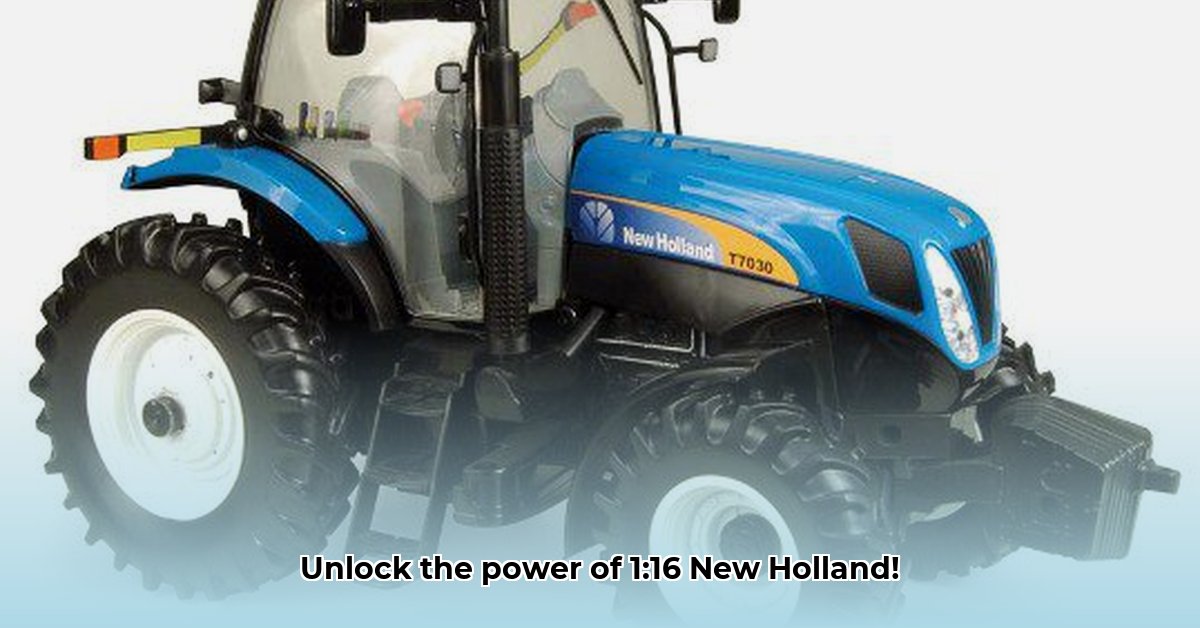
The satisfying weight of a finely detailed 1:16 scale New Holland tractor in your hand – it's more than just a toy; it's a piece of agricultural history, a testament to craftsmanship, and a rewarding collectible. For more information on different types of tractors, check out this helpful resource: different tractor types. This guide will equip you with everything you need to navigate the world of these miniature marvels, from identifying authentic models to building a thriving collection.
Identifying Genuine 1:16 New Holland Tractors
Spotting a counterfeit is crucial. Did you know that subtle differences can separate a genuine treasure from a cleverly disguised imitation? Authentic models boast exceptional detail. The paint is smooth and even, decals are crisp and accurately placed, and the overall feel is substantial and weighty. Counterfeits, in contrast, often exhibit uneven paint, blurry decals, and a flimsy, lightweight feel. Examine the materials: genuine models often utilize higher-quality plastics, sometimes incorporating metal components.
| Feature | Authentic 1:16 New Holland Tractor | Counterfeit |
|---|---|---|
| Detailing | Impeccable detail, precisely mirroring the real tractor | Often blurry, missing fine details, or inaccurate |
| Paint Job | Smooth, even, vibrant colors | Uneven, with runs, drips, or faded areas |
| Decals/Markings | Sharp, clear, correctly positioned | Fuzzy, misaligned, smudged, or generally poor quality |
| Weight | Feels solid and weighty for its size | Lighter, feeling cheap and insubstantial |
| Materials | High-quality plastics, possibly metal parts | Lower-quality, brittle plastic; might feel cheap |
Assessing Value & Condition
Condition is paramount. Think of it like grading a rare coin – a "mint" condition tractor is perfect, untouched, and in its original box. "Near mint" allows for almost imperceptible flaws. "Good" shows minor wear, "Fair" more noticeable wear, and "Poor" signifies significant damage. Rarity significantly impacts value; limited editions and unique paint schemes command higher prices. Original packaging and accessories (like miniature tools) substantially increase value. For example, a mint condition, limited edition 1:16 scale New Holland T9 tractor in its original packaging could fetch a premium price. Have you ever wondered what factors contribute to a collectible's value? Let's explore...
Finding & Purchasing Collectibles
Online marketplaces—eBay, specialized forums—are great starting points. Antique shops, flea markets, and garage sales might also yield treasures. Always check seller ratings, utilize secure payment methods (like PayPal), and don't hesitate to negotiate, bearing shipping costs in mind. Remember, due diligence and patience are your allies in this rewarding hunt! Do you know the most effective way to negotiate a fair price?
Caring for Your Collection
Proper storage safeguards your investment. Dust-free display cases are ideal, protecting against scratches, dust, and accidental damage. Avoid direct sunlight and extreme temperatures, which can fade colors and damage plastics. For cleaning, use a soft, dry cloth; avoid harsh chemicals. Gentle handling prevents breakage.
Building a Collection
Thematic collections are rewarding: focus on specific models, years, or even paint schemes. Online communities provide resources, advice, and connections with fellow enthusiasts. Sharing your passion with others makes the journey even more fulfilling.
Key Takeaways:
- Authenticating your finds is crucial; pay close attention to detail.
- Condition significantly impacts value; mint condition in original packaging is a highly prized asset.
- Research is your weapon; understand market trends, manufacturers, and rarity before purchasing.
- Several avenues exist to find these gems; online marketplaces, auctions, and specialized shops offer unique opportunities.
- Proper storage and handling protect your investment.
- Building a collection is a long-term endeavor, offering a continuous journey of learning and discovery.